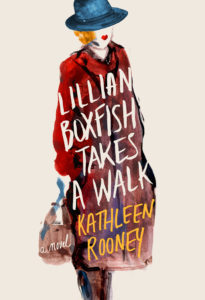
Praise
“Transporting…witty, poignant and sparkling.”―People (People Picks Book of the Week)
“Prescient and quick….A perfect fusing of subject and writer, idea and ideal.”―Chicago Tribune
“Extraordinary…hilarious…Elegantly written, Rooney creates a glorious paean to a distant literary life and time―and an unabashed celebration of human connections that bridge past and future.―Publishers Weekly (starred and boxed)
“Rooney’s delectably theatrical fictionalization is laced with strands of tart poetry and emulates the dark sparkle of Dorothy Parker, Edna St. Vincent Millay, and Truman Capote. Effervescent with verve, wit, and heart, Rooney’s nimble novel celebrates insouciance, creativity, chance, and valor.”―Booklist (starred review)
Book Description
“In my reckless and undiscouraged youth,” Lillian Boxfish writes, “I worked in a walnut-paneled office thirteen floors above West Thirty-Fifth Street…”
She took 1930s New York by storm, working her way up writing copy for R.H. Macy’s to become the highest paid advertising woman in the country. It was a job that, she says, “in some ways saved my life, and in other ways ruined it.”
Now it’s the last night of 1984 and Lillian, 85 years old but just as sharp and savvy as ever, is on her way to a party. It’s chilly enough out for her mink coat and Manhattan is grittier now―her son keeps warning her about a subway vigilante on the prowl―but the quick-tongued poetess has never been one to scare easily. On a walk that takes her over 10 miles around the city, she meets bartenders, bodega clerks, security guards, criminals, children, parents, and parents-to-be, while reviewing a life of excitement and adversity, passion and heartbreak, illuminating all the ways New York has changed―and has not.
A love letter to city life in all its guts and grandeur, Lillian Boxfish Takes a Walk by Kathleen Rooney paints a portrait of a remarkable woman across the canvas of a changing America: from the Jazz Age to the onset of the AIDS epidemic; the Great Depression to the birth of hip-hop.
Lillian figures she might as well take her time. For now, after all, the night is still young.
5 Questions for Author Kathleen Rooney
by M.J. Rose
 First let me congratulate you on a compelling and delightful story – you’ve created quite a character. Having worked in advertising myself, and having had a grandfather who was one of the original Mad Men was really impresses with your grasp of the business and its history. I know you based Lillian partly on real-life ad woman and author, Margaret Fishback. Did you meet her? What kind of research did you do?
First let me congratulate you on a compelling and delightful story – you’ve created quite a character. Having worked in advertising myself, and having had a grandfather who was one of the original Mad Men was really impresses with your grasp of the business and its history. I know you based Lillian partly on real-life ad woman and author, Margaret Fishback. Did you meet her? What kind of research did you do?
 KR: Thank you so much, and I’m so glad you enjoyed the book. Sadly, Margaret Fishback died in 1984, so I never got to meet her in person. Luckily, I got to meet her in another way, through her archives which her son, Anthony Antolini, had the foresight to donate to the Duke University Hartman Center for Sales, Advertising, and Marketing History. Back in 2007—thanks to a tip from my high school best friend who was earning her M.S. in Library Science and interning there at the time—I got to be the first non-archivist to work with the Fishback materials. I was struck by how much wit and personality leapt out of the boxes of papers and letters, not to mention the books of poems. And so while I can’t say, honestly, that I knew Margaret Fishback, I can say that I got to know a lot about her thanks to the voluminous artifacts and writings she left behind.
KR: Thank you so much, and I’m so glad you enjoyed the book. Sadly, Margaret Fishback died in 1984, so I never got to meet her in person. Luckily, I got to meet her in another way, through her archives which her son, Anthony Antolini, had the foresight to donate to the Duke University Hartman Center for Sales, Advertising, and Marketing History. Back in 2007—thanks to a tip from my high school best friend who was earning her M.S. in Library Science and interning there at the time—I got to be the first non-archivist to work with the Fishback materials. I was struck by how much wit and personality leapt out of the boxes of papers and letters, not to mention the books of poems. And so while I can’t say, honestly, that I knew Margaret Fishback, I can say that I got to know a lot about her thanks to the voluminous artifacts and writings she left behind.
Besides that, I read a lot not just about the time periods I was describing from 1926 to 1984, but I also read a lot of materials that were actually published in those eras. That helped me get my ear attuned to how people might have spoken back then, and also how they might have acted and reacted to their surroundings. I love research and could do it endlessly, so I had to really force myself to move from that phase to the actual writing. Although once I did, that was a ton of fun, too.
 Speaking of Mad Men. How do you think Lillian would have liked the show?
Speaking of Mad Men. How do you think Lillian would have liked the show?
 KR: I think Mad Men would have been a bit lost on Lillian. Her career had more or less ended by the time the Mad Men era began, and it really depicts a different milieu than the one she inhabited: in her heyday she wrote ads in-house for Macy’s, and never worked for an ad agency. Later on, she freelanced, but she was never steeped in that Mad Men office environment. Her classic ads are characterized by their wit, but they don’t have any of the psychological acuity (or, she would argue, the manipulativeness) of the ads of the later midcentury.
KR: I think Mad Men would have been a bit lost on Lillian. Her career had more or less ended by the time the Mad Men era began, and it really depicts a different milieu than the one she inhabited: in her heyday she wrote ads in-house for Macy’s, and never worked for an ad agency. Later on, she freelanced, but she was never steeped in that Mad Men office environment. Her classic ads are characterized by their wit, but they don’t have any of the psychological acuity (or, she would argue, the manipulativeness) of the ads of the later midcentury.
Also, part of what makes Mad Men so effective is the distance of its setting from the way we live in the early 21st century. In 1984 Lillian would have been only a couple of decades past the Mad Men era, and some of the surprising contemporary mores that it depicts wouldn’t have seemed unusual to her. Rather than being transported, she would have been annoyed at the lionization of the advertisers who superseded her, and with a little grumbling would probably have changed the channel in search of a rerun of Columbo. She loves that Peter Falk!
 You paint a detailed and delightful picture of this extraordinary woman’s life. Was it daunting to tell such a big story and at the same time such a very intimate one? How did you find that balance?
You paint a detailed and delightful picture of this extraordinary woman’s life. Was it daunting to tell such a big story and at the same time such a very intimate one? How did you find that balance?
 KR: The split structure helped a lot, and the key to that, of course, was my idea to make my character a flâneuse—a practitioner of joyful and aimless urban walks. By letting Lillian be an inveterate stroller through the Manhattan streets, I was able to let her look both outside herself at all the strangers she encounters, but also inside herself as her memories get sparked by the landscape she’s crossing.
KR: The split structure helped a lot, and the key to that, of course, was my idea to make my character a flâneuse—a practitioner of joyful and aimless urban walks. By letting Lillian be an inveterate stroller through the Manhattan streets, I was able to let her look both outside herself at all the strangers she encounters, but also inside herself as her memories get sparked by the landscape she’s crossing.
 I know you are both a poet —much like Lillian— and a founding member of Poems While You Wait, a team of poets and their typewriters who compose commissioned poetry on demand. To me that has a bit in common with how we create ads. They have to be short and we have to write them fast and the best ones have powerful messages. How did your background come into play in writing this novel?
I know you are both a poet —much like Lillian— and a founding member of Poems While You Wait, a team of poets and their typewriters who compose commissioned poetry on demand. To me that has a bit in common with how we create ads. They have to be short and we have to write them fast and the best ones have powerful messages. How did your background come into play in writing this novel?
 KR: I love that you make that connection because I agree that writing poetry for customers on the spot and coming up with good ad copy are related activities. The real Margaret Fishback was a light verse poet (and you can read more of her work here: https://www.poetryfoundation.org/poems-and-poets/poets/detail/margaret-fishback and an essay I wrote about her here: https://www.poetryfoundation.org/features/articles/detail/91790 ), and I never doubted that I would make Lillian a poet, too. Not only was it helpful to be able to draw on my own ideas and opinions as a poet as I created the character of Lillian, but being a poet also helped, I think, to boil the book down to its relatively short length. I cover a long life and a big set of eras in a relatively short space, and the conciseness and economy of language that you develop as a poet assisted me in accomplishing that. I think that all writers, even non-poets, should read poetry because it helps you to become so much more direct and focused. Plus, it can be a lot of fun.
KR: I love that you make that connection because I agree that writing poetry for customers on the spot and coming up with good ad copy are related activities. The real Margaret Fishback was a light verse poet (and you can read more of her work here: https://www.poetryfoundation.org/poems-and-poets/poets/detail/margaret-fishback and an essay I wrote about her here: https://www.poetryfoundation.org/features/articles/detail/91790 ), and I never doubted that I would make Lillian a poet, too. Not only was it helpful to be able to draw on my own ideas and opinions as a poet as I created the character of Lillian, but being a poet also helped, I think, to boil the book down to its relatively short length. I cover a long life and a big set of eras in a relatively short space, and the conciseness and economy of language that you develop as a poet assisted me in accomplishing that. I think that all writers, even non-poets, should read poetry because it helps you to become so much more direct and focused. Plus, it can be a lot of fun.
 Thinking of all the book club readers who are reading this interview, would you put together your ideal author book club– made up of authors –who you would pick to meet with to discuss your book. And what would you expect them to ask you?
Thinking of all the book club readers who are reading this interview, would you put together your ideal author book club– made up of authors –who you would pick to meet with to discuss your book. And what would you expect them to ask you?
 KR: My husband and fellow writer, Martin Seay, and I are in an excellent book club here in Chicago organized by our friend Fern, and they’re going to read Lillian next, so I have to say thanks to them here before answering that question. And what a great question! I suppose I’d want it to have Joan Didion, Eve Babitz, Dawn Powell, Dorothy Parker, Oscar Wilde, Langston Hughes, and Frank O’Hara because I think all of them would have some valuable perspectives on wit, poetry, cities, and how best to act around other people, and how to just stay interested in life, all of which are important things to Lillian.
KR: My husband and fellow writer, Martin Seay, and I are in an excellent book club here in Chicago organized by our friend Fern, and they’re going to read Lillian next, so I have to say thanks to them here before answering that question. And what a great question! I suppose I’d want it to have Joan Didion, Eve Babitz, Dawn Powell, Dorothy Parker, Oscar Wilde, Langston Hughes, and Frank O’Hara because I think all of them would have some valuable perspectives on wit, poetry, cities, and how best to act around other people, and how to just stay interested in life, all of which are important things to Lillian.
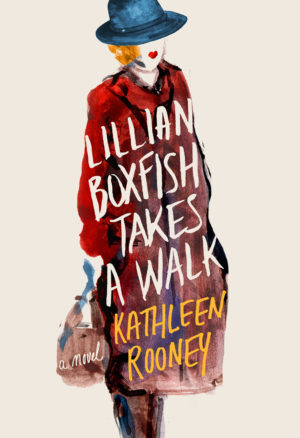
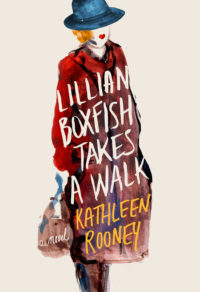
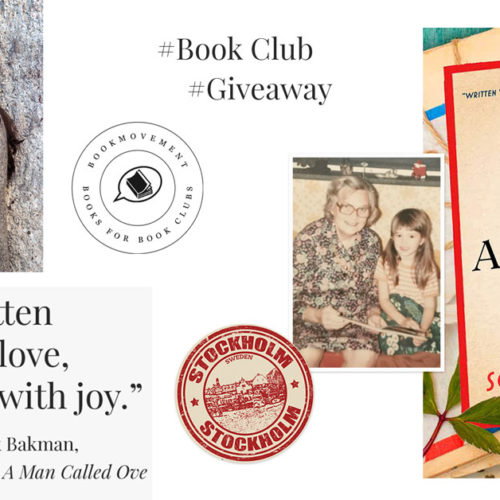
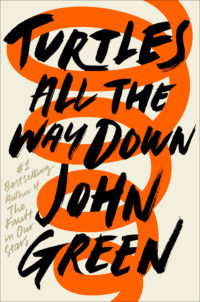
Leave a Reply